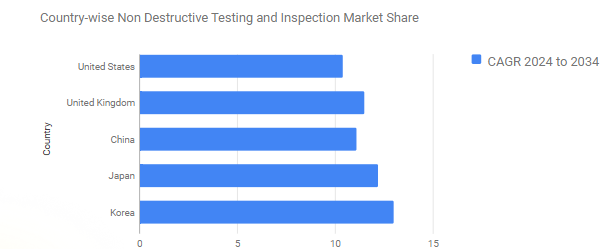Imagine ensuring the safety and integrity of critical infrastructure, products, and equipment without causing any damage. This is the magic of Non-Destructive Testing and Inspection (NDT&I). NDT&I methods act as the X-ray vision of the industrial world, enabling technicians to detect hidden flaws, cracks, and imperfections within materials and structures. This ensures the safe and reliable operation of everything from airplanes and pipelines to bridges and buildings. Fueled by growing safety regulations, the ever-increasing complexity of industrial assets, and a focus on preventative maintenance, the NDT&I Market is experiencing significant growth. Let’s peel back the layers and explore the applications of NDT&I methods and the exciting trends shaping this dynamic market.
Inspecting the Invisible: Applications of NDT&I Techniques
The NDT&I market offers a diverse array of techniques, each suited to specific materials and applications:
- Ultrasonic Testing (UT): This method uses high-frequency sound waves to identify cracks, voids, and other defects within materials. It’s widely used in inspecting welds, pipelines, and critical machinery components.
- Radiographic Testing (RT): Similar to X-rays, RT uses electromagnetic radiation to create internal images of structures and components. It’s effective for detecting internal cracks, corrosion, and other hidden flaws in welds and castings.
- Eddy Current Testing (ET): This technique uses electromagnetic fields to detect surface and subsurface defects in conductive materials like metals. ET is commonly used for inspecting pipes, tubing, and heat exchanger components.
- Magnetic Particle Testing (MT): This method utilizes magnetized particles to reveal surface cracks in ferromagnetic materials like steel. It’s a quick and reliable method for inspecting welds, pressure vessels, and other critical components.
- Liquid Penetrant Testing (PT): This technique uses colored or fluorescent liquids to seep into surface cracks and defects, making them visible under ultraviolet light. PT is effective for inspecting welds, castings, and other non-porous materials.
Get Exclusive Sample Copy of the Report: https://www.futuremarketinsights.com/reports/sample/rep-gb-19368
Growth Factors and Opportunities
The NDT&I Market is experiencing a surge in popularity driven by several key trends:
- Stringent Safety Regulations: Governments worldwide are implementing stricter regulations mandating regular NDT&I of critical infrastructure like bridges, pipelines, and pressure vessels. This ensures the safety and integrity of these assets.
- Growing Infrastructure Needs: The aging global infrastructure necessitates regular inspections and maintenance. NDT&I methods play a crucial role in identifying potential problems before they escalate into catastrophic failures.
- Increasing Complexity of Industrial Assets: Modern industrial equipment and machinery are becoming increasingly complex. NDT&I techniques are essential for ensuring the quality and integrity of these assets throughout their lifecycle.
- Focus on Preventative Maintenance: Modern industries are shifting towards preventative maintenance strategies. NDT&I allows for early detection of potential problems, minimizing downtime and repair costs.
- Advancements in NDT&I Technology: Manufacturers are constantly innovating, developing new NDT&I techniques with improved accuracy, portability, and ease of use. Automation and integration with digital data management systems are also gaining traction.
The global non destructive testing and inspection market will reach a valuation of USD 11.7 billion in 2024, driven by integration of augmented reality and virtual reality. The trend is set to create new opportunities for the market, leading to a projected CAGR of 10.2% between 2024 and 2034, and reaching a total valuation of approximately USD 31.0 billion by 2034.

Challenges and Considerations
The NDT&I Market also faces some hurdles:
- Skilled Workforce: NDT&I requires trained and certified inspectors to operate the equipment and interpret the results accurately. A shortage of skilled NDT personnel can be a challenge in some regions.
- Cost Considerations: While NDT&I can save money in the long run by preventing failures, the initial investment in equipment and personnel training can be substantial.
- Material Limitations: Not all NDT&I techniques are suitable for every material. Selecting the appropriate method for the specific application is crucial for obtaining reliable results.
Get Full Report Now: https://www.futuremarketinsights.com/checkout/19368
Environment Health and Safety Market Value Soaring at USD 15.8 billion by 2034
Environment Health and Safety Market Size Rising to USD 15.8 billion by 2034
Check Weighing Equipment Market worth USD 1,023.9 million by 2034




